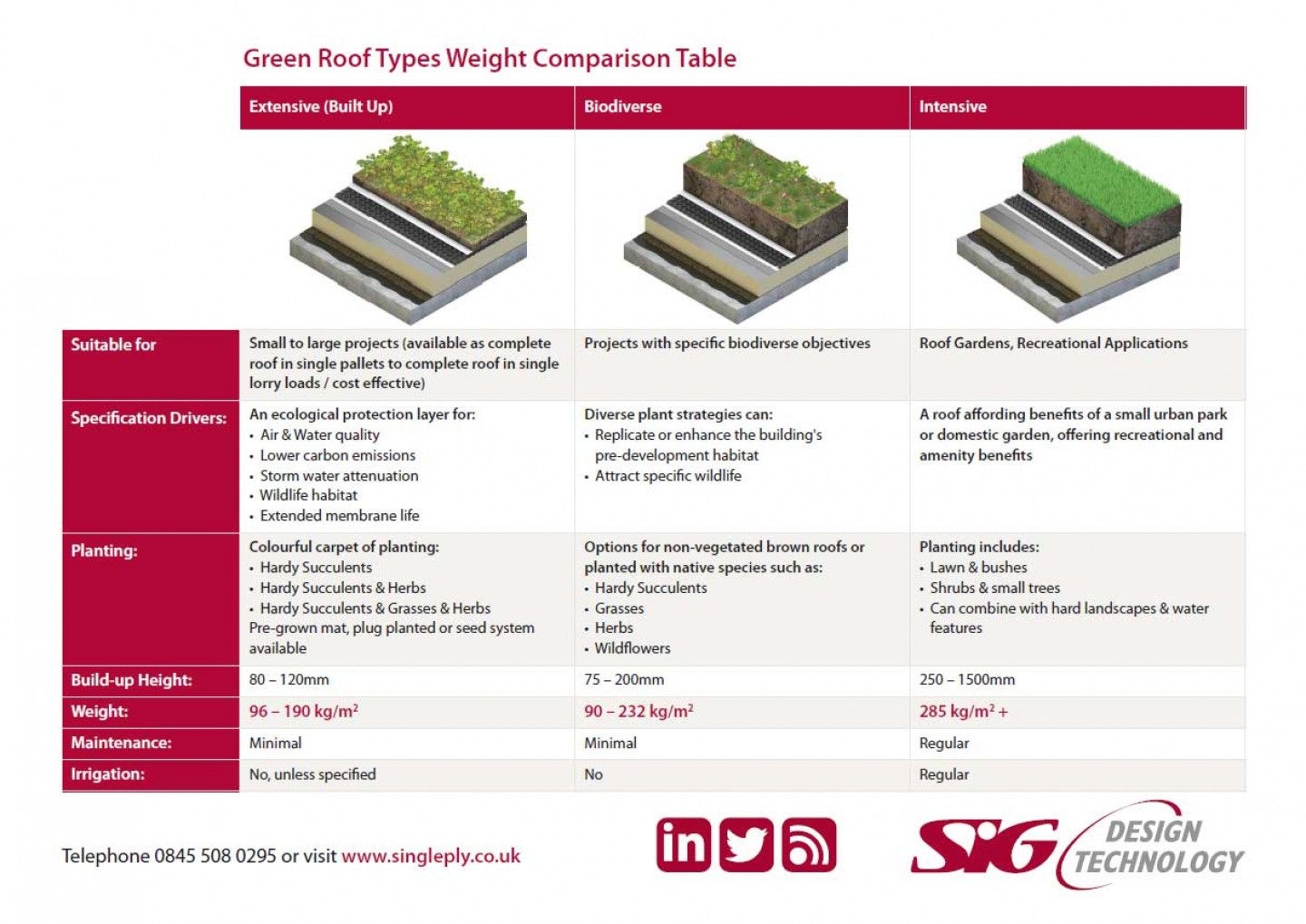We are often asked at SIG Design & Technology about the weight of a green roof, because it’s one of a number of factors specifiers need to consider when deciding which roofing system to use.
To help you compare the options, we’ve produced a table of the different types of green roofs we provide, including information about:
- Suitable Applications for each Green Roof system
- Specification Drivers for Green Roofs
- Green roof planting options
- Height of the green roof systems (which will affect upstand requirements)
- Weight range of each system (which may determine the structural support you need)
- Maintenance needs for Green Roofs, and
- Irrigation needs.
Click here to view the table
Types of Green Roofs
Here’s a summary of the different types of green roof available.
1. Extensive Built up Green Roofs
Extensive green roofs are designed to reap the benefit that green roofs offer at minimal cost and with very little maintenance. A shallow layer of growing medium supports low growing, stress-tolerant plants that can generally look after themselves.
Built up extensive green roofs come in separate elements (drainage layer, growing medium, plant layer etc) that are installed on site. This makes them more cost effective than a modular system, and a range of weights and heights can be used. Planting can be pre-grown mat, plug plants or seeding, depending on your budget and other requirements.
2. Biodiverse Green Roofs
Biodiverse green roofs are low maintenance roofs designed to create or replace natural habitats. They can be specified to meet local Biodiversity Action Plans or to support specific flora and fauna, including Bats, Bees, Butterflies, Birds and so on. The weight of biodiverse green roofs varies according to the needs of the plant species required.
3. Intensive Green Roofs
If you want a garden on your roof, perhaps if you are hoping to plant shrubs and have a mown grass area, this solution is the most appropriate, but it is the heaviest and requires the same maintenance of any garden. Intensive green roofs are essentially ‘roof gardens’ and may also need to allow for the additional weight of paving and terracing, furniture and even trees.
Will my roof require additional structural support?
Whether newbuild or replacement, a structural engineer will need to design the structure of your roof and take into account the loading of various options. Share this post with him/her and ask whether additional structural support will be needed on your project. They are welcome to contact us directly for additional information.
How can choice of green roof reduce costs?
Your choice of green roof system can affect both the capital and operational costs of the roof. If you can reduce the weight of the roof this may reduce the need for additional structural support, depending on the existing structure specification. Equally, choosing a low maintenance extensive or biodiverse roof will reduce the need for ongoing operational costs. Have a talk to us about your requirements and we can investigate the options for you, free of charge.
SIG Design & Technology takes the risk out of roof design, offering a genuinely independent choice of waterproofing for flat, green, zinc and copper roofs. Designs are covered by our PI insurance and we’re part of SIG plc, a FTSE250 company. Our blog at www.singleply.co.uk/blog explores some of your common problems in roof design and system choice, or book our new RIBA CPDs, ‘A Structured Approach to Roof Specification & Design’ and ‘Specifying Hard Metals: Choosing the Right Product for the Project’.

